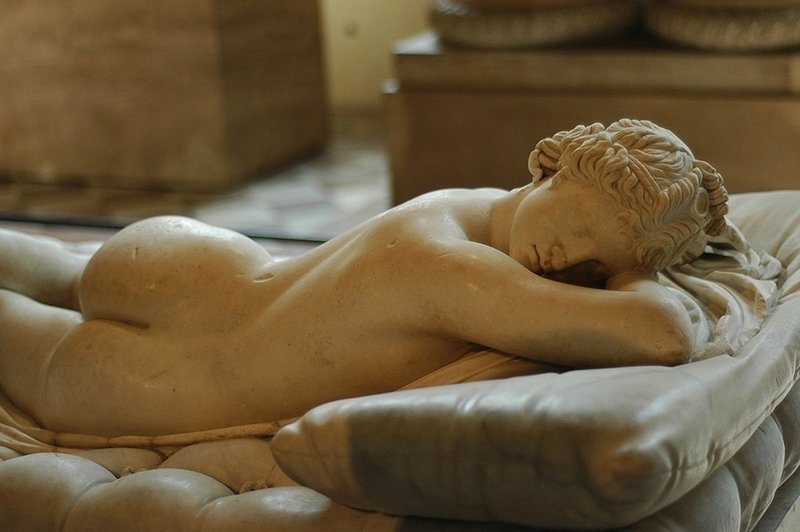
#11 Negative capability
Let's take a look at this sculpture.
The figure of a young nude woman with soft body lines is beautifully represented lying on her face. However, when we turn around the figure's belly side while admiring its beauty from the backside, we find male genitalia there.

The world is full of things that are not black and white.
What is your sexuality? What is your sexuality? LGBT as a sexual minority has been discussed more frequently than ever before. Recently, the concept of LGBTQIA, which includes asexuality (sexuality that does not have sexual or romantic feelings toward others), has emerged. For example, on the U.S. version of Facebook, more than 50 options in the gender field can be filled in. This indicates how complex and diverse gender categories are and how difficult it is to categorize them in broad terms such as "male" and "female.
The higher the resolution we have when looking at a person, the more we bring into relief the complex nature of people and the social issues intertwined with many factors, not limited to gender issues. The world is full of problems for which there are no quick answers or clear-cut black-and-white solutions.
Tolerating the state of "I don't know" brings us closer to an essential understanding.
On the other hand, the human brain is not good at continuing to think about such uncertainties. Therefore, we tend to apply simple labeling or frames to complex problems. The resulting "answer" may seem easy to understand at first glance, but it should be noted that there is always a possibility that the essential part of the answer has been left out.
So how should we approach questions that cannot be quickly answered? Here I would like to introduce the concept of "negative capability" discovered by the English poet John Keats. In "Negative Capability: The Power to Endure Unanswerable Situations" (Asahi Sensho) by Yomogi Siki, a psychiatrist, and novelist, this is described as "negative capability, negative capacity, the ability to be in uncertainty, wonder and skepticism without seeking immediate proof or reason. It is described as "the ability to be in uncertainty, wonder, and skepticism without urgently seeking proof or reason. Rather than trying to answer complex questions as quickly as possible, the first step in approaching an essential understanding of things is acquiring this ability and creating the staying power to endure the state of "not knowing" in the air.
Taking the time to continue confronting difficult questions leads to a deeper understanding and insight into the patient.
In clinical practice, we as medical professionals are confronted with patients who are flesh and blood human beings. As mentioned earlier, they crystallize a complex intertwining of various physical and social factors, and they also change over time. Even if we keep a close eye and ear on every piece of information, we will never fully understand the patient. But that does not mean we should try to simplify and seek answers. I believe that accepting complex and uncertain issues and, when solutions cannot be found, taking the situation gracefully and working with it over time will lead to a deeper understanding and insight into the patient.
The model for this sculpture is "she.
Is the model of this sculpture a "she," a "he," or neither? While reminding us that it is never easy to grasp the answer or the essence, it also teaches us the importance of changing perspectives and angles and the value that can only be gained by taking the time to continue thinking about it.
Art in this exhibition: Sleeping Hermaphroditus (artist unknown), Public Domain
from
まだまだコンテンツも未熟ですが応援して頂けるとすっごい励みになります!
